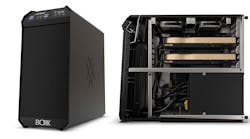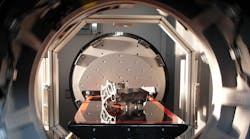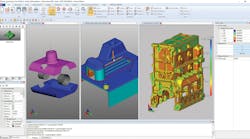Project managers and sales representatives in metalcasting (as well as mold-and-diemaking, and toolmaking) businesses routinely respond to their customers’ inquiries about the cost of producing a specific part. When this happens, that part must be inspected and analyzed to draw those conclusions and supply an answer. The answer may not be simple or automatic: it calls for research, evaluation, perhaps some experimentation. It certainly calls for some design-software expertise.
The information to respond to those inquiries typically resides in the dense software record of the part design, the CAD data. Kisters North America — developers of CAD visualization programs — proposes its new 3DViewStation platform as an easy-to-use, affordable application for reevaluation and inspection of CAD records that is useful "enterprise-wide."
The typical, basic software functions needed to support inspection and analysis are loading of native CAD files, volume calculations measurements, dimensions, sectioning, and annotations. In addition, metalcasters taking a new look at their products often will need the functions for isolating and inspecting parts, in order to perform a more advanced analysis.
With 3DViewStation, this work can be organized into views and easily saved for retrieval later.
“There seems to be a common misconception that industry-specific analysis functions are only available in a CAD system,” said Tammy Pleasent, Kisters North America sales manager. “However, 3DViewStation, a fast and extremely easy-to-use software product, provides these functions at a much lower price point.”
The new version of 3DViewStation, released earlier this year, features additions and enhancements that assist users to repurpose their CAD data. For instance, V2019’s new technical documentation features the splitting function, real-time wall thickness measurement, feature recognition, and a user-friendly import dialog.
Kisters provides visualization applications for Windows desktop, web (via any HTML5 browser), as well as a VR edition.
“One typical, industry-specific required functionality is draft-angle analysis,” Pleasent noted, “which assists in the identification of undercuts. In addition, we have recently added a splitting function that helps determine the complexity of the required tool, in order to unmold the produced part. This can be combined with draft-angle analysis, providing a multitude of tools to assist throughout the entire molding process.”
Pleasant also described other complementary functions, including real-time wall thickness measurement, projected-area calculation, and analysis of the complete part, the results of which are shown by color-coding the object and a supplied color key.
“These advanced functions are available in our Desktop version and WebViewer product. Therefore, you can access these tools in both a stand-alone or integrated environment on any leading system (such as an ERP, MES or PLM system) by leveraging our high level APIs.”
Another effective function for reusing CAD data involves technical documentation, whether the deliverables are images, illustrations, or interactive 3D geometry to be repurposed in printed or online manuals or spare part catalogues.
“Kisters’ development and enhancements always follow a customer-centric approach. After reviewing our customer’s most important requirements for technical documentation processes, we created interactive and automatic BOM ID generation,” said Robert Collins, a Kisters North American sales manager. “These BOM IDs will be reused to interactively and automatically generate balloon callouts in an exploded view of the assembly.”
3DViewStation is provided with current and established importers for a range of 3D and 2D formats, including Catia, NX, Creo, SolidWorks, SolidEdge, Inventor, JT, 3D-PDF, STEP, DWG, DXF, DWF, and MS Office.
It is available as Desktop, ActiveX, VR-Edition and HTML5 WebViewer product-versions. All product variations are intended to be used together with a PLM, ERP, or other management system product configuration or service and spare part applications, providing all necessary APIs. For cloud, portal and web-solutions, there is an HTML5-based WebViewer solution available, which does not require client installation. All file formats can be used in combination with the intelligent navigation and hyperlinking features to address the needs of complex integration scenarios.









